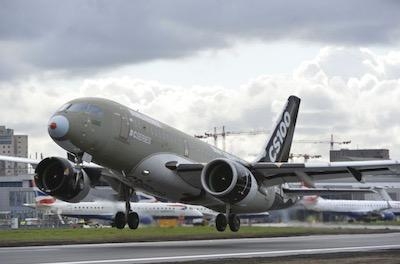Thu, Dec 31, 2020
AD 2020-26-20 Requires Inspecting The Air Extraction Duct Installation
The FAA is adopting a new airworthiness directive (AD) for certain Airbus Canada Limited Partnership Model BD-500-1A10 and BD-500-1A11 airplanes.

This AD was prompted by a report that during installation on the final assembly line, a foreign object damage (FOD) protective end cap was not removed from an extraction duct of the crew oxygen system. The protective end cap must be removed to prevent a build-up of oxygen under the flight deck floor, which is a fire risk. This AD requires inspecting the air extraction duct installation to determine if a protective end cap is installed, and removing any protective end cap found. The FAA is issuing this AD to address the unsafe condition on these products. This AD is effective February 3, 2021.
Supplementary Information: Transport Canada Civil Aviation (TCCA), which is the aviation authority for Canada, has issued Canadian AD CF-2020-19, dated May 26, 2020 (also referred to after this as the Mandatory Continuing Airworthiness Information, or the MCAI), to correct an unsafe condition for certain Airbus Canada Limited Partnership Model BD-500-1A10 and BD-500-1A11 airplanes. You may examine the MCAI in the AD docket on the internet at https://www.regulations.gov by searching for and locating Docket No. FAA-2020-0683.

The FAA issued a notice of proposed rulemaking (NPRM) to amend 14 CFR part 39 by adding an AD that would apply to certain Airbus Canada Limited Partnership Model BD-500-1A10 and BD-500-1A11 airplanes. The NPRM published in the Federal Register on August 11, 2020 (85 FR 48480). The NPRM was prompted by a report that during installation on the final assembly line, a FOD protective end cap was not removed from an extraction duct of the crew oxygen system. The protective end cap must be removed to prevent a build-up of oxygen under the flight deck floor, which is a fire risk.
The NPRM proposed to require inspecting the air extraction duct installation to determine if a protective end cap is installed, and removing any protective end cap found. The FAA is issuing this AD to address this possible ignition source, which could result in an oxygen-fed fire. See the MCAI for additional background information.
More News
We're Everywhere... Thanks To You! Even with the vast resources and incredibly far-reaching scope of the Aero-News Network, every now and then a story that should be reported on sl>[...]
“The Coast Guard anticipates new aircraft procurements may be based off Sikorsky’s MH-60R aircraft, which is the maritime variant of the H-60 in active production. Diff>[...]
Aero Linx: Classic Jet Aircraft Association (CJAA) The CJAA Formation and Safety Team (FAST) Mission is to be the sole authorized provider of formation training and certification f>[...]
During A Low Pass Over A Gravel Bar, The Airplane’S Tailwheel Impacted An Area Of Rough, Uneven Terrain Analysis: The pilot reported that he was flying low-level over various>[...]
Hold For Release Used by ATC to delay an aircraft for traffic management reasons; i.e., weather, traffic volume, etc. Hold for release instructions (including departure delay infor>[...]
 ANN FAQ: How Do I Become A News Spy?
ANN FAQ: How Do I Become A News Spy? Aero-News: Quote of the Day (10.28.25)
Aero-News: Quote of the Day (10.28.25) ANN's Daily Aero-Linx (10.28.25)
ANN's Daily Aero-Linx (10.28.25) NTSB Final Report: Aviat Aircraft Inc A-1B
NTSB Final Report: Aviat Aircraft Inc A-1B ANN's Daily Aero-Term (10.28.25): Hold For Release
ANN's Daily Aero-Term (10.28.25): Hold For Release




